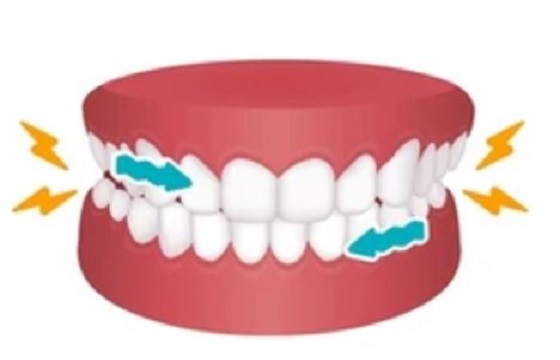Bruxism
Bruxism, often known as teeth grinding, is a disorder in which people clench or grind their teeth unintentionally, usually when asleep. This is a widespread illness that affects people of all ages. It might take place during the day (awake) or at night (sleep). Experts warn that if left untreated, can cause a variety of dental and health problems. While some specialists highlight the significance of early detection and treatment to avoid long-term harm, others focus on controlling the stress and anxiety

What is Bruxism
This syndrome can develop unintentionally and is frequently associated with stress, anxiety, or sleep difficulties. People may be unaware that they are grinding their teeth, especially if it occurs while sleeping. Can cause significant wear on teeth, resulting in dental issues such as tooth sensitivity, jaw discomfort, and headache. Correct diagnosis and therapy are critical for managing and mitigating
How long time takes of Bruxism Process
Treatment time varies depending on individual characteristics such as the severity of the ailment and the treatment modalities used. In general, therapies like as wearing a bespoke mouthguard can provide instant comfort. Behavioral therapy targeted at stress reduction and jaw muscle relaxation may take weeks or months to provide substantial results. Dental procedures, such as reshaping teeth or making orthodontic corrections, may need many visits over several months. To guarantee efficacy and comfort, a dentist or specialist should assess and alter the treatment plan on a regular basis.
What Are the Symptoms of Bruxism?
Common symptoms include grinding or clenching sounds during sleep, flattened or chipped teeth, increased tooth pain or sensitivity, tight or sore jaw muscles, headaches, earaches, and disrupted sleep. If left untreated, can lead to more severe dental issues such as tooth fractures, gum recession, and even tooth loss. It is important to consult a dentist if you suspect you have to prevent further complications.
What Causes Bruxism?
Often linked to psychological factors such as stress, anxiety, and tension. It can also be related to physical factors like an abnormal bite, missing or crooked teeth, or sleep disorders such as sleep apnea. Lifestyle factors, such as caffeine, alcohol consumption, and smoking, can also contribute. Identifying the underlying cause is crucial for developing an effective treatment plan.
Treatments
The treatments depending on the underlying cause and severity of the condition. Common treatments include stress management techniques, behavioral therapy, and the use of mouthguards or splints to protect the teeth during sleep. Dental treatments such as orthodontic adjustments, crowns, or reshaping of the teeth may be necessary to address any dental damage. In some cases, medications may be prescribed to reduce muscle activity or manage pain. Consulting with a dentist or specialist is essential to determine the most appropriate treatment plan..
How is Diagnosed?
Diagnosing usually involves a comprehensive dental examination and review of the patient’s medical history. Dentists may look for signs of wear on the teeth, tenderness in the jaw muscles, and other symptoms associated. In some cases, a sleep study may be recommended to evaluate sleep patterns and rule out sleep disorders. Accurate diagnosis is essential to develop an effective treatment plan and prevent further damage.
Sleep Disorders
Ooften associated with sleep disorders such as sleep apnea. Understanding this connection is important for effective treatment. Sleep studies can help identify whether related to sleep apnea or other sleep disturbances. Treating the underlying sleep disorder can significantly reduce the occurrence and improve overall health. It is important to address any related sleep issues to achieve optimal results.
Treatment Costs
The costs of treatment can vary widely depending on the type of treatment required. Non-invasive treatments such as mouthguards and stress management techniques are generally less expensive than dental restorations or orthodontic treatments. Insurance coverage and the dentist’s experience also influence treatment costs. While treatment can be costly, addressing the condition early can prevent more expensive dental repairs in the future. Consulting a dentist for a detailed cost estimate and treatment plan is recommended.
How Should Bruxism be Managed?
Treatments and lifestyle adjustments are required to properly managed. Regular dental check-ups are vital for monitoring the condition and addressing any oral disorders as early as possible. Using a mouthguard at night might help protect your teeth from injury. Exercise, meditation, and counseling are all stress reduction approaches that can assist control the psychological issues that contribute. Avoiding coffee, alcohol, and smoking can also help to lessen the incidence of teeth grinding.
Frequently asked questions about Bruxism
*The treatment pages provided on this platform are intended for informational purposes only and do not constitute medical or dental advice, diagnosis, or treatment recommendations. The information presented on these pages is not a substitute for professional medical or dental advice from qualified healthcare providers.
*By accessing and using the treatment pages on this platform, you acknowledge and agree to the terms of this disclaimer. If you do not agree with these terms, please refrain from using the treatment pages.